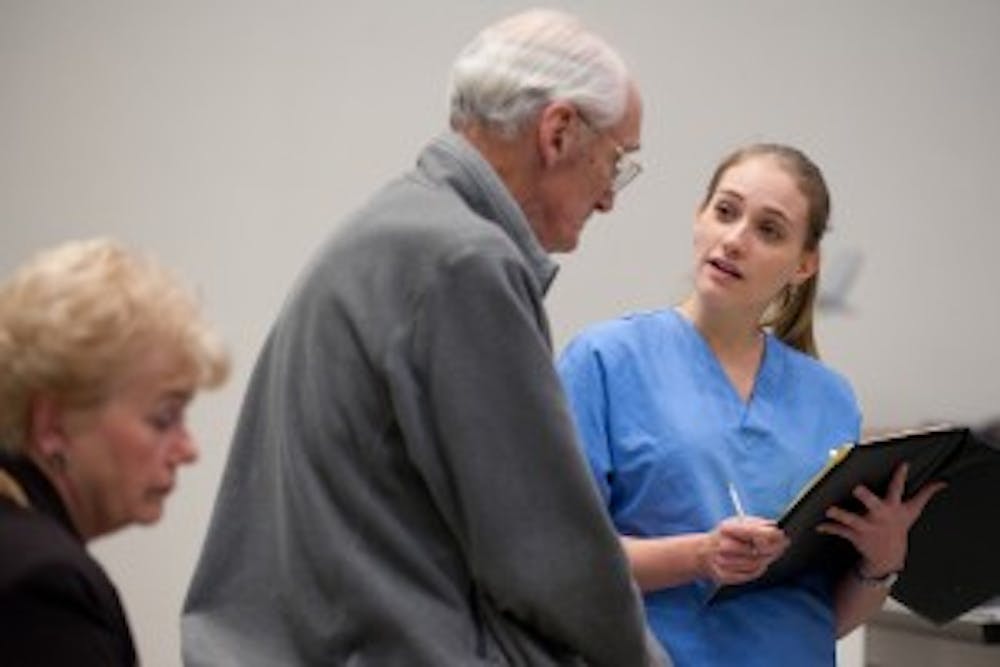In an era where the Affordable Care Act has enabled more than 16.4 million uninsured Americans to gain healthcare coverage, there has been a concomitant rise in the demand for higher quality care. Hospitals are being held more accountable for the outcomes of patients, especially those 65 and older who would benefit from a more coordinated healthcare system.
Yet, despite the growing need to address the medical issues faced by an increasingly aging population, the availability of hospital services for seniors in the United States has not been well-studied.
To rectify this gap in understanding the distribution of senior care services, researchers at the Johns Hopkins School of Medicine have recently developed a Senior Care Services Scale (SCSS) tool, which provides information about the availability of geriatric services. The study was led by Dr. Alicia Ines Arbaje, director of transitional care research at Johns Hopkins Bayview Medical Center and assistant professor of medicine at the Johns Hopkins School of Medicine.
Published in the September 2015 issue of Medical Care, the report is the first study, to the knowledge of the research team, that was conducted since the mid-1980s in order to evaluate hospital services that are geared toward the senior population on a nationwide scale.
Utilizing data from the comprehensive database of the American Hospital Association Annual Survey of Hospitals, Arbaje and her team analyzed the senior medical services provided by 4,998 U.S. hospitals in 1999 and 4,381 hospitals in 2006. To develop the SCSS, the researchers selected the healthcare services deemed to be most relevant to the care of older adults, after which they developed a taxonomy. By applying the developed classification system to the senior care services available between 1999 and 2006, the researchers were then able to analyze how geriatric healthcare has changed over time.
From 1999 to 2006, despite a growing senior population, fewer hospitals have offered post-acute community care services such as skilled nursing and assisted living, while more hospitals provided inpatient specialty services such as geriatrics, palliative care and hospice. According to the researchers, this trend may be indicative of the shift in the hospital reimbursement system in the late 1990s from a fee-for-service to a prospective payment system. The researchers also considered the changing nature of healthcare delivery as one of the reasons for the decreased number of post-acute care services. Such services require a level of community outreach that is not necessary in the case of inpatient specialty care.
In addition to using the SCSS to compare geriatric healthcare over time, the researchers applied the SCSS to assess the geographic distribution of post-acute care and inpatient specialty services in the U.S. in 2006. When they analyzed the distribution of senior medical services, they found that both inpatient and post-acute services for seniors were mostly concentrated in the northern parts of the U.S. and located near several metropolitan areas elsewhere.
Among the regions studied, the southwestern, south central and southeastern areas had the lowest concentration of senior care services. The researchers found that the geographic availability of geriatric medical care did not reflect the distribution of senior residences documented in the U.S. census data.
The researchers speculate that this discrepancy between hospital services and demographic trends in 2006 may be suggestive of the healthcare system’s deficiencies in the continuum of care for seniors. While the overall increase of inpatient specialty care can be interpreted as an encouraging sign, the expansion of such services is not an indication of improved care coordination from 1999 to 2006 since post-acute care is helpful in getting older adults situated back in their communities following a hospital discharge.
The developers of the SCSS aim for their tool to play a vital role in further studies that seek to monitor trends in the provision of geriatric healthcare services. The tool has been developed with the aim of empowering policymakers and healthcare groups to improve the integration and organization of hospital services on a local, regional and national bases.
The researchers also intend for the public to gain access to this valuable resource so that patients can assess the services offered by nearby hospitals. According to the researchers, improvements in coordinating and integrating healthcare services are especially important in a time in which accountable care organizations and other value-based care initiatives have been mobilized by the Affordable Care Act.





